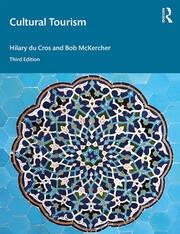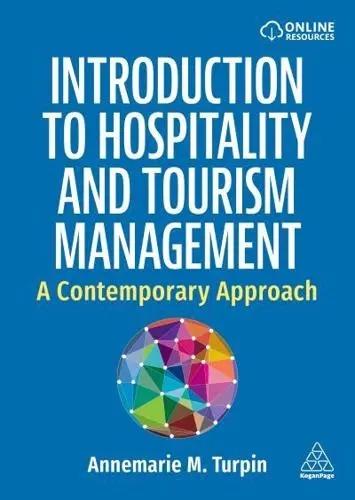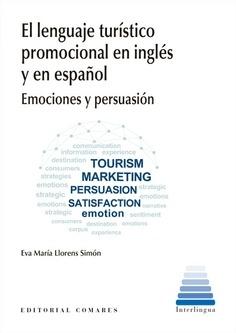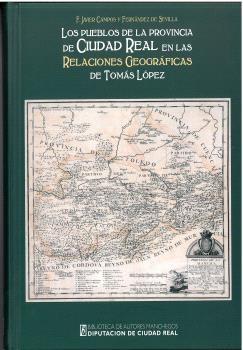Cultural Tourism remains the only book to bridge the gap between cultural tourism and cultural and heritage management. The first edition illustrated how heritage and tourism goals can be integrated in a management and marketing framework to produce sustainable cultural tourism. The current edition takes this further to base the discussion of cultural tourism in the theory and practice of cultural and heritage management (CM and CHM), under the understanding that for tourism to thrive, a balanced approach to the resource base it uses must be maintained. An 'umbrella approach to cultural tourism represents a unique feature of the book, proposing solutions to achieve an optimal outcome for all sectors.
Reflecting the many important developments in the field this new edition has been completely revised and updated in the following ways:
New content on increasingly relevant topics including sustainability, climate change, the threat of de-globalization, overtourism and social media.
New sections on experience creation, accessibility and inclusivity, as well as expanded material on creative industries and new management challenges.
New international case studies and tried-and-tested assignment exercises have been added to every chapter.
Written by experts in both tourism and cultural heritage management, this book will enable professionals and students to gain a better understanding of their own and each others roles in achieving sustainable cultural tourism. It provides a blueprint for producing top-quality, long-term cultural tourism products.
List of plates
List of figures
List of tables & boxes
Acknowledgements
Abbreviations
Part A Setting the context -
1 Introduction: defining cultural tourism
What is cultural tourism?
2 Challenges in achieving sustainable cultural tourism
Introduction
The challenge of triple/quadruple bottom line sustainability
The challenge of climate change
Parallel evolution of tourism and cultural management
Collaborators or competitors?
Relationships between tourism and cultural management
The consequences
3 Issues, benefits, risks and costs
Introduction
Community
Cultural tourism and enhanced quality of life
Costs associated with cultural tourism
Optimizing benefits and minimizing impacts?
Part B Cultural Assets
4 Cultural heritage management principles and practice (with special reference to World Heritage)
Introduction
Cultural heritage management
Management challenges
World Heritage
Conclusion
5 Tangible cultural heritage
Introduction
Conventions, codes, charters and declarations
A four stage planning process
6 Intangible cultural heritage and creative arts
Introduction
Conventions, codes, charters and declarations
A three stage approach to safeguarding intangible cultural heritage
Contemporary culture and the advent of creative tourism
Part C Tourism, the tourist and stakeholders
7 How tourism works
Introduction
The nature of tourism
Conclusion
8 The cultural tourism market: a cultural tourism typology
Introduction
Cultural tourists
Segmenting the cultural tourism market
A cultural tourist typology - centrality of motive and depth of experience
Implications for cultural tourism
A few words of caution about numbers that appear too good to be true
9 Tourism attraction system, markers and gatekeepers
Introduction
Tourist attraction systems
Markers
Gatekeepers and knowledge brokers
Effect of multiple gatekeepers on the message passed to the tourist
Part D Products
10 Cultural tourism products
Introduction
Cultural assets as tourism products
Products as attractions
Strangeness vs. familiarity, the environmental bubble and the necessity of standardizing and commodifying products
Conclusions
11 Assessing product potential
Introduction
Considering the wider context
Understanding the asset in its setting
Asset specific considerations: place and cultural spaces
Stakeholder and consultation issues
People, skills and financial resources
Conclusion
12 Market Appeal/Robusticity Matrix: a site specific auditing tool
Introduction
The Market Appeal / Robusticity a site specific auditing tool
Introduction
The market appeal/robusticity matrix
Operationalization - a two step process
Conclusion - a precursor to site and experience management
Part E Operationalization
13 Framework for understanding what is necessary for a successful attraction
Introduction
Success factors
Development options
Building
Packaging and bundling
Clustering and precincts
Linear or circular routes and networks
Rebranding/creating a specific cultural tourism product area or network
Festivals and events
Creating memorable experiences
Tell a story
Make the asset come alive
Make it participatory
Focus on quality
Make it relevant to the tourist
14 Applying planning and management frameworks
Introduction
Planning
Situation analysis
Establishment of an overall mission of vision and goal getting
Creation of action plans
Marketing
Planning for greater access
A world on demarketing
Evaluation and feedback mechanisms
15 Experience creation
Introduction
What is interpretation and what are the benefits of good interpretation?
The ICOMOS interpretation charter
Goal of interpretation and success factors
The interpretation process
Tactics to create peak experiences
The medium is the message
ICT
Epilogue
Improvements needed
Challenges still remain
Some general observations
A few possible research areas
Glossary
References
Index









